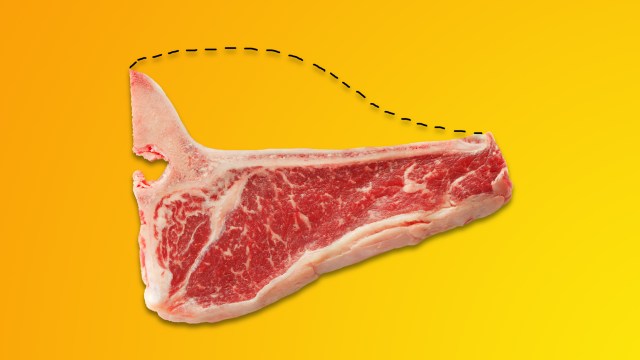Why blockchain b2b will be the megatrend of 2019

- 2019 will be known as the enterprise-to-enterprise boom in blockchain.
- B2B blockchain companies will out-perform the market because they provide the tools that other businesses need in order to survive.
- Blockchain is expected to become a $2-billion-dollar industry in the next three years.
The potential of blockchain might have been ruined for you by your unemployed cousin who wears Balenciagas to Thanksgiving dinner and told you to enter into the cryptocurrency market at the wrong time.
However, blockchain (sometimes referred to as ‘Distributed Ledger Technology’, or ‘DLT’) is much more than that.
The use case for the technology extends far beyond Bitcoin, cryptocurrency, and those way-too-expensive sneakers that your cousin somehow managed to afford.
Blockchain will probably outlast his dead-end job, and it might even outlast you. Despite market fluctuations and scare-mongering, the technology is here to stay.
Blockchain and the world of b2b
82 percent of Fortune 100 companies are researching how they can implement blockchain technology into their current business model. This figure includes every single one of the Fortune 50 companies, and every single Big Four Accounting Firm, including PwC and Deloitte.
IBM is one of the main companies leading the charge, and they are already providing blockchain solutions for enterprises such as Walmart and Sam’s Club. In 2017, the blockchain industry was valued at around $339 million dollars and is predicted to grow from there to an estimated $2 billion dollars by 2022.
The key drivers of blockchain’s growth thus far have been cryptocurrency, private blockchains for enterprises such as Big Four accounting firms, and government use cases.
However, now the industry is shifting its focus to business-to-business (b2b) implementation.
Improving b2b relationships through blockchain
A recent report by IBM says that blockchain can be used to improve a “shared version of events” which can help supply chain management. It also suggested that blockchain could improve collaboration across multiple parties and streamline dispute resolution.
Similarly, a Forbes article notes that blockchain could help improve the longevity of b2b relationship cycles. An increasing number of businesses in the b2b sector are introducing blockchain technology as a part of their service suite.
Currently, there are three major b2b businesses that are leading the wave of blockchain innovation which is currently taking off:
Hydrotank Data Center (HDC)
HDC is transforming the global data center marketplace by building the world’s first data center inside of a shipping container.
In addition, HDC is building a marketplace that directly connects vendors, service providers, and clients all in one web and mobile application called the Hydrotank Data Center Marketplace.
The Singapore-based startup is building a community around the project which will allow members to vote on future site locations of the data centers. It also holds an annual shareholders conference in addition to other community events.
Tatau
With a business model centered around computing power, Tatau is a significant player in the Artificial Intelligence (A.I.) and cryptocurrency mining arena. On the one hand it’s great for cryptominers as it can save them energy and costs and on the other hand it can also be used in industries beyond cryptocurrency, so it’s not held back by cryptomarket volatility.
Unlike other competitors that used a CPU-based data center computing model, Tatau has implemented a GPU-based computing power marketplace that connects suppliers and vendors.
Maxonrow
The Maxonrow blockchain protocol is a product-based startup that is bringing the world one step closer to mass adoption.
It features 10 different products, including the likes of a Point of Sales (POS) device, a KYC and AML application, a land registry solution, and a wallet.
The company is extending blockchain solutions from being inaccessible, expensive designs that can only be used by multi-billion dollar companies, to simple technology that can be used by enterprises of all sizes.
Buying.com
Buying.com is tapping into the world’s $4.5 trillion-dollar e-commerce industry by dismantling the current seven step supply chain model which extends from the manufacturer to the last mile distribution point.
Through buying.com’s protocol and application, e-commerce merchants are able to offer group-buy deals directly to consumers. This allows shoppers to combine their purchasing power together so that they can unlock minimum order quantity deals that only larger merchants can currently access.
For example, if you want to currently buy a television, you will pay the maximum price for it as you are purchasing a single unit which will cost more for the vendor to fulfill and is less worth their while. However, if you connect with 49 other shoppers to bring the demand up to 50 televisions, you can get a lower price from the vendors throughout the supply chain as they will be making a larger profit and will also get a better price on bulk packing, shipping etc. This is the heart of buying.com’s business model.
The future of blockchain
Only the future knows how blockchain technology will change society and the way we conduct business. All that we know for certain for now is that more b2b businesses are adopting it more than ever before and that this is an area where blockchain can shape the future of transactions, economies and procedures.
Can blockchain continue to grow into the predicted $2-billion-dollar industry within the next 5 years?
Will it smash through the barrier completely and set a new record?
If things continue the way they’re going, it’s looking very probable that blockchain B2B could just be the next big megatrend of 2019.





